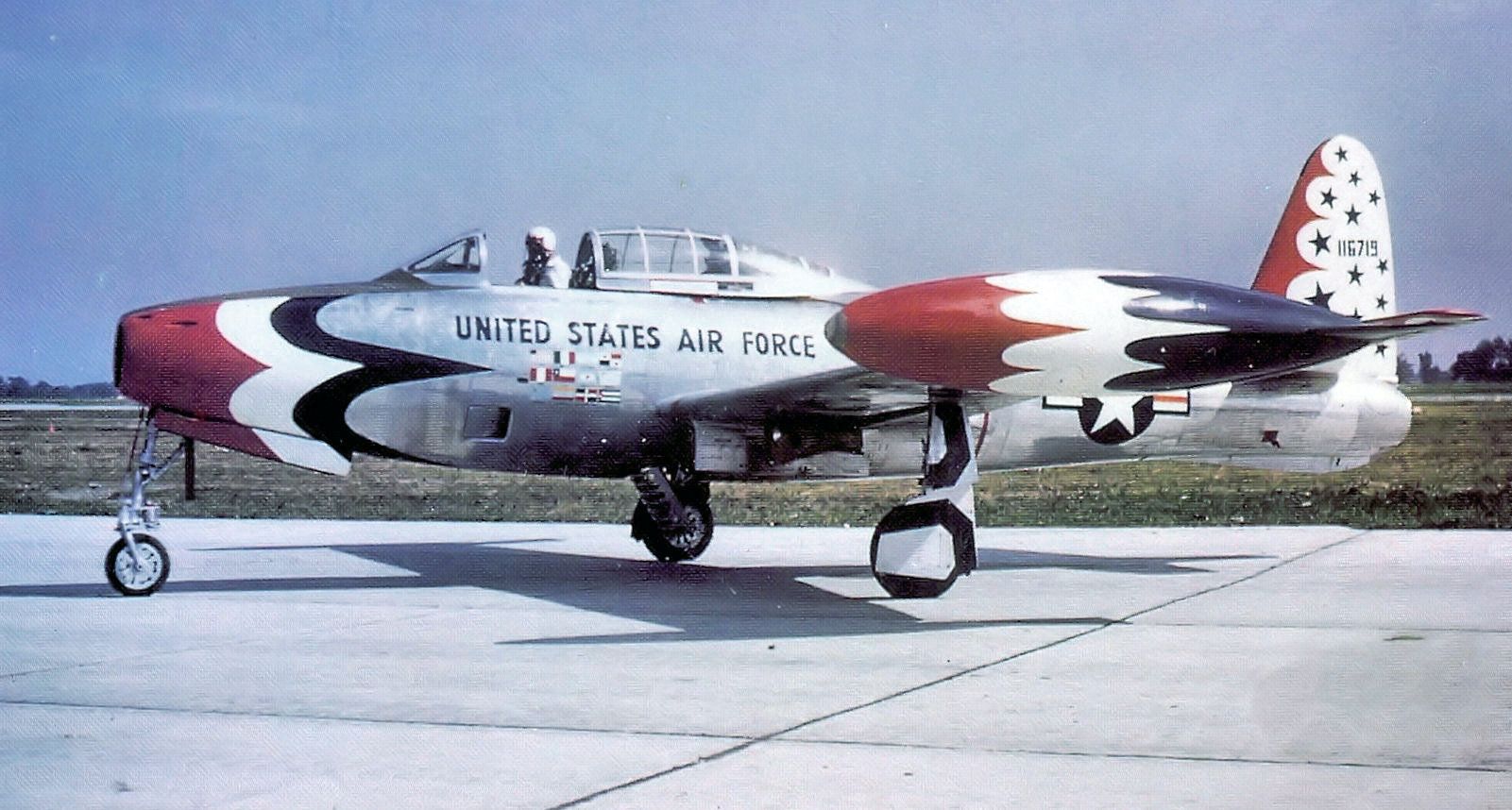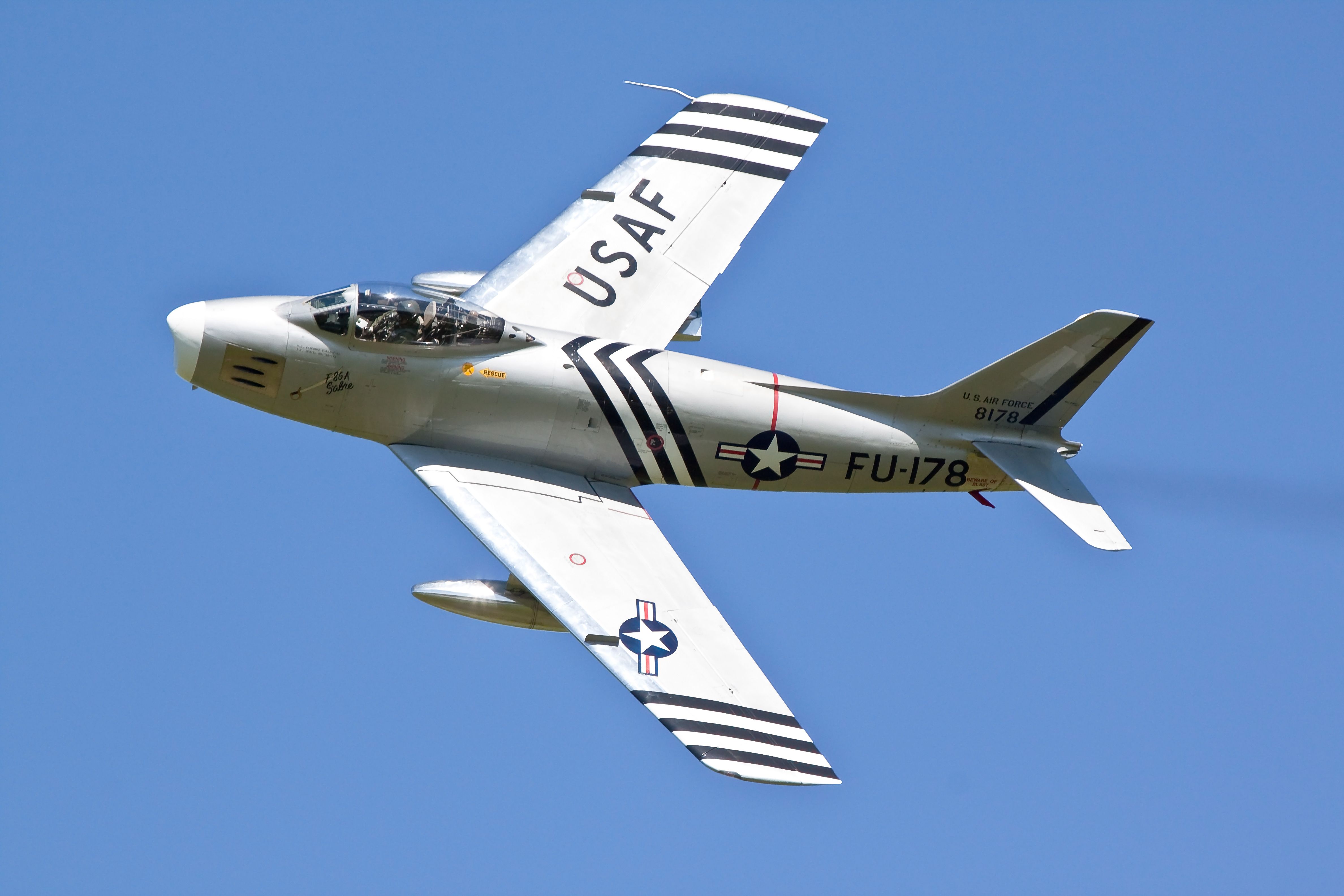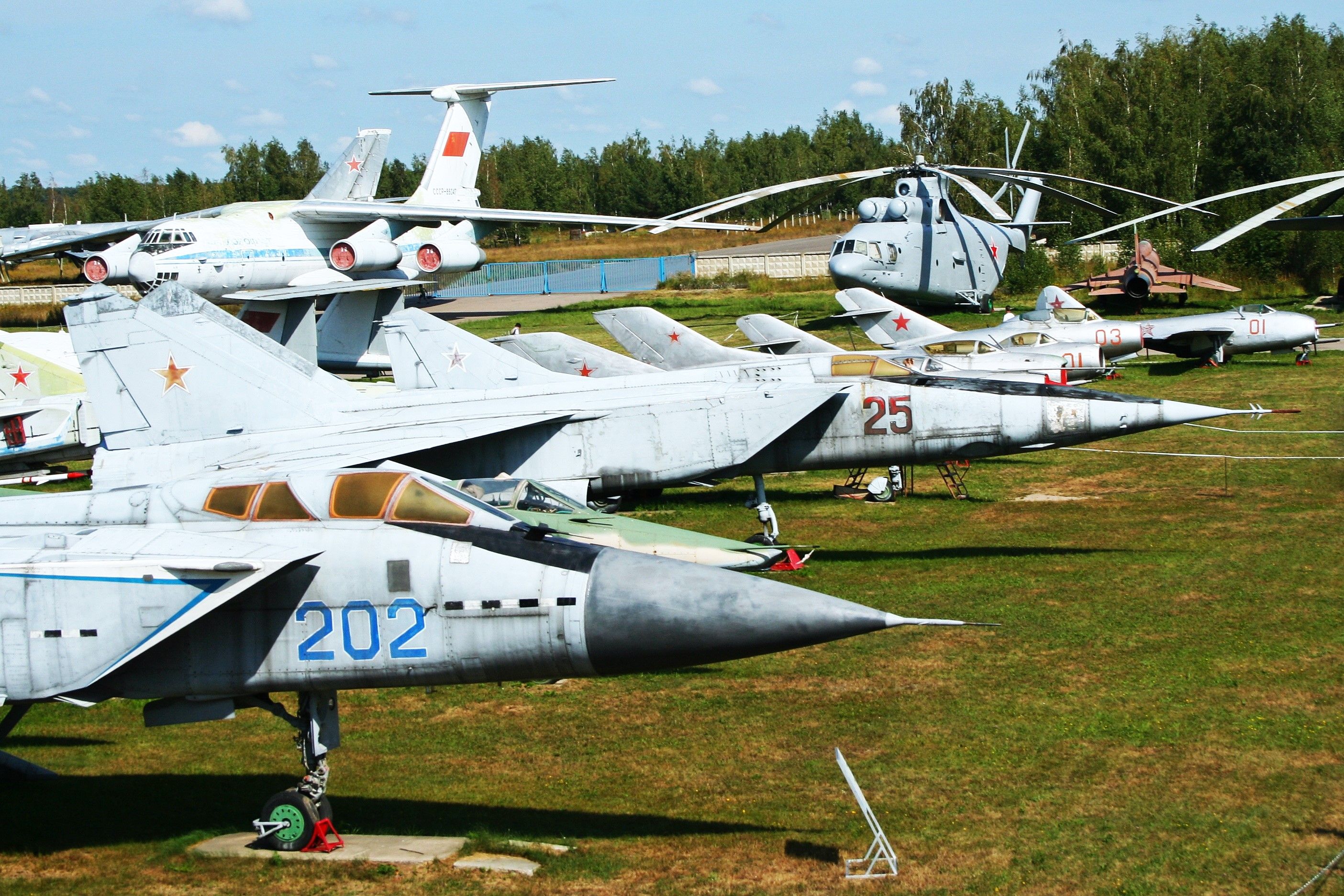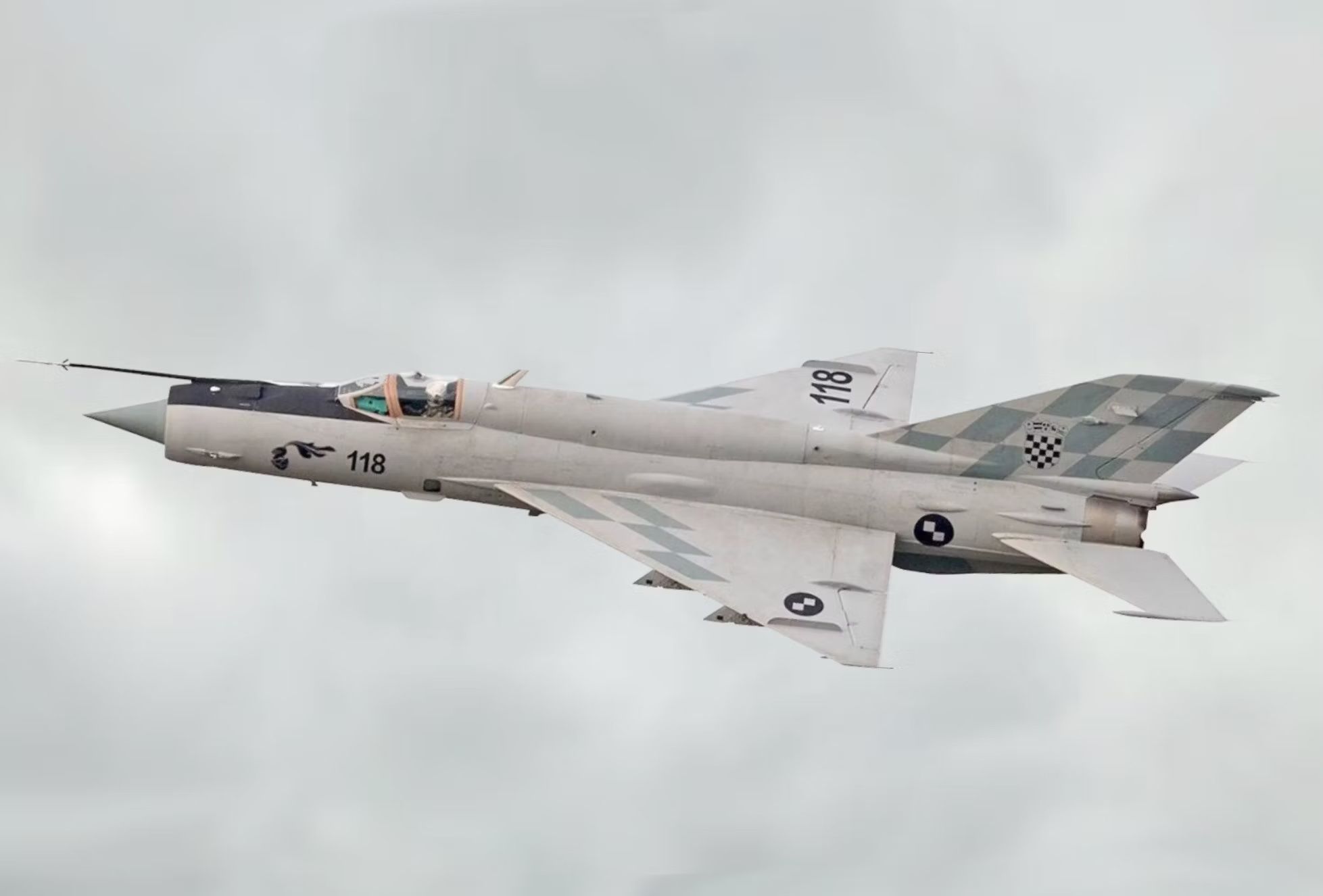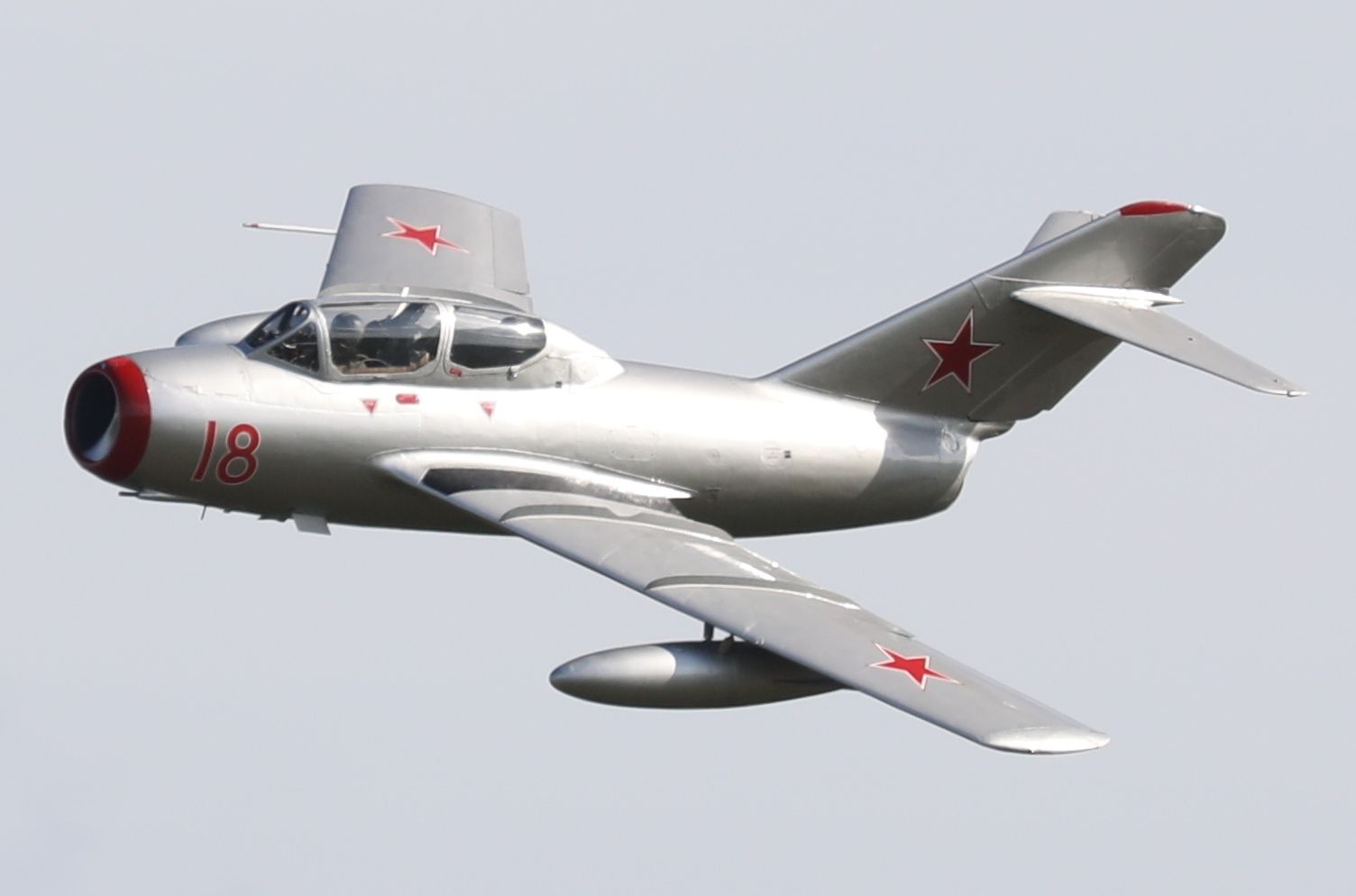Summary
- The Republic F-84 Thunderjet was one of the best-selling fighter jets, with 7,524 units produced.
- The North American F-86 Sabre had a production of 9,860 units, serving as a front-line combat aircraft.
- The Mikoyan-Gurevich MiG-15 tops the list with 18,000 units produced.
The post-WWII era saw some of the most produced fighter jets in military aviation. Although those combat aircraft may not have been as advanced as the latest-generation planes, they were indeed the best-selling jet fighters of all time. We look at a list of top-selling fighter jets based on the number of units produced.
5
Republic F-84 Thunderbolt
Number of units produced: 7,524
- Crew: 1
- Powerplant: 1 × Allison J35-A-29 turbojet engine, 5,600 lbf (25 kN) thrust
- Maximum speed: 622 mph (1,001 km/h, 541 kn) at sea level
- Range: 670 mi (1,080 km, 580 nmi) (internal fuel)
- Guns: 6x .50 in (12.7 mm) M3 Browning machine guns, 300 rounds per gun
- Rockets: Up to 32 5-inch rockets
- Bombs: 4,000 lb (1,800 kg) bombs, including 1x Mark 7 nuclear bomb
Photo: United States Air Force
The Republic F-84 Thunderjet was a fighter-bomber aircraft designed and developed by US-based Republic Aviation. The United States Army Air Forces (USAAF) relayed a need for a “day fighter” in the early 1940s. The F-84 performed its first flight in February 1946 and entered service in November 1947. In its initial years, the aircraft was plagued by various structural and engine problems. The problems were so interconnected that the Air Force considered canceling the program altogether.
Several years of manufacturer improvements led to a more mature version, the F-84G, released in 1951. The Thunderiet slowly became one of the favorite jet fighters in the 1950s. Fourteen global air forces operated various versions of the F-84, making it one of the favorites worldwide. Apart from the US Air Force (226 aircraft), the Turkish Air Force (479 aircraft), and the Italian Air Force (254), the Danish Air Force (240), and the Yugoslavian Air Force (219) remain the top operators of the Thunderjet. A total of 7,524 units were produced. The last of the F-84s retired with the Yugoslavian Air Force in 1974.
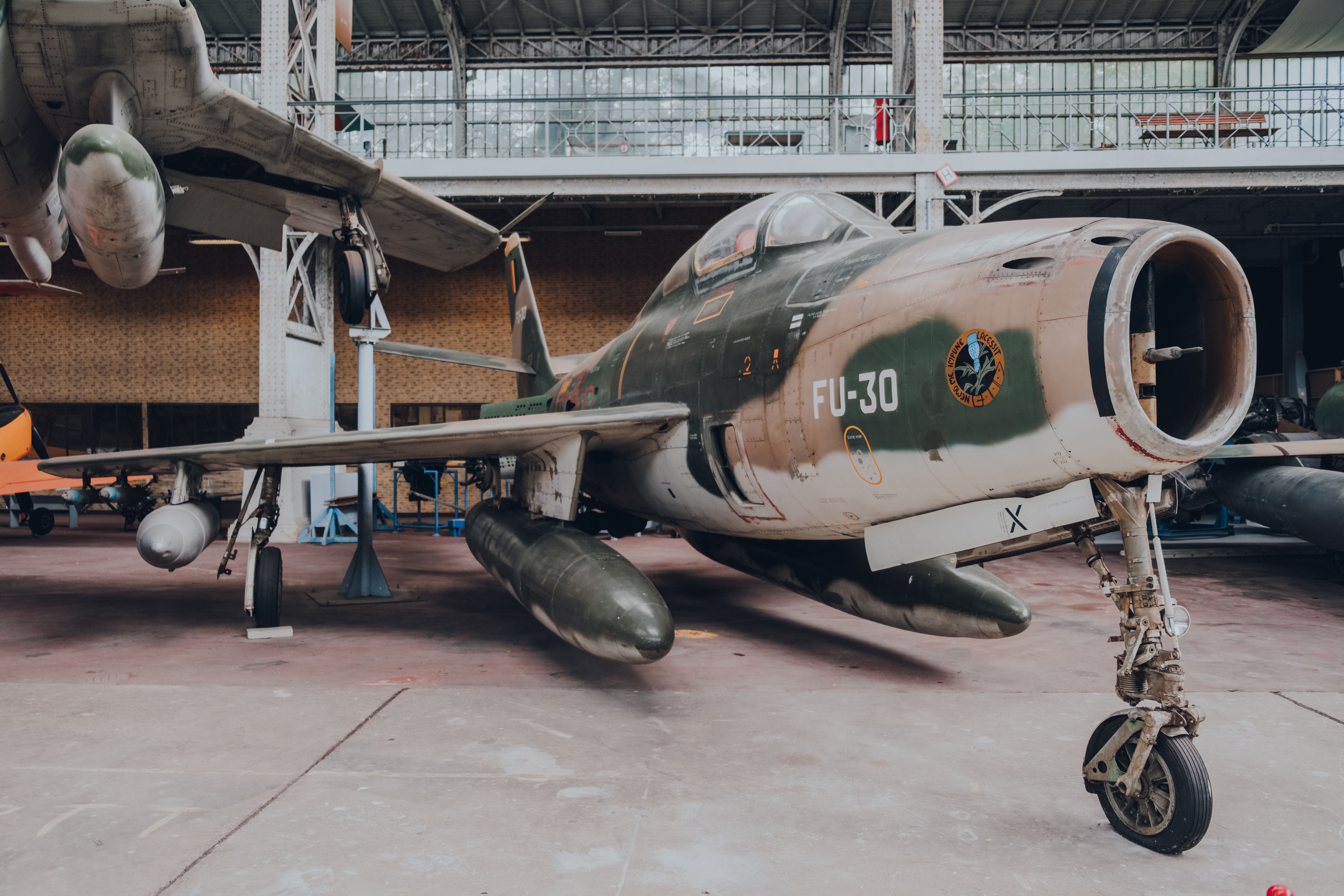
Related
1950s Fighter-Bomber: 5 Fast Facts About The Republic F-84F Thunderstreak
The type set a record and was used by the Thunderbirds.
4
North America F-86 Sabre
Number of units produced: 9,860
- Crew: 1
- Powerplant: 1x General Electric J47-GE-27 turbojet engine, 5,910 lbf (26.3 kN) thrust
- Maximum speed: 687 mph (1,106 km/h, 597 kn) at sea level at 14,212 lb (6,446 kg) combat weight
- Combat range: 414 mi (666 km, 360 nmi) with two 1,000 lb (454 kg) bombs and 2x 200 US gallons (170 imp gal; 760 L)
- Guns: 6x 0.50 in (12.7 mm) M3 Browning machine guns (1,800 rounds in total)
- Rockets: a variety of rocket launchers; e.g., 2 Matra rocket pods with 18 SNEB 68 mm rockets per pod
- Bombs: 5,300 lb (2,400 kg) of payload on four external hardpoints.
The North American F-86 Sabre is a transonic fighter designed and developed by North American Aviation. The aircraft performed its first flight in October 1947 and entered service with the US Air Force in 1949. It is the first US-based swept-wing jet fighter to counter the Soviet-built MiG-15 in high-speed dogfights during the Korean War. The two jets came head-to-head in several major battles in history.
Photo: IanC66 | Shutterstock
Produced as both a fighter interceptor and a fighter bomber, it served as a front-line combat aircraft for numerous global air forces. A large number of variants were built over the years in an effort to continuously improve the capabilities and performance and to address customer requirements. More than 30 global air forces operated the jet before the type saw retirement, with the Bolivian Air Force, in 1994. A total of 9,860 units were produced.
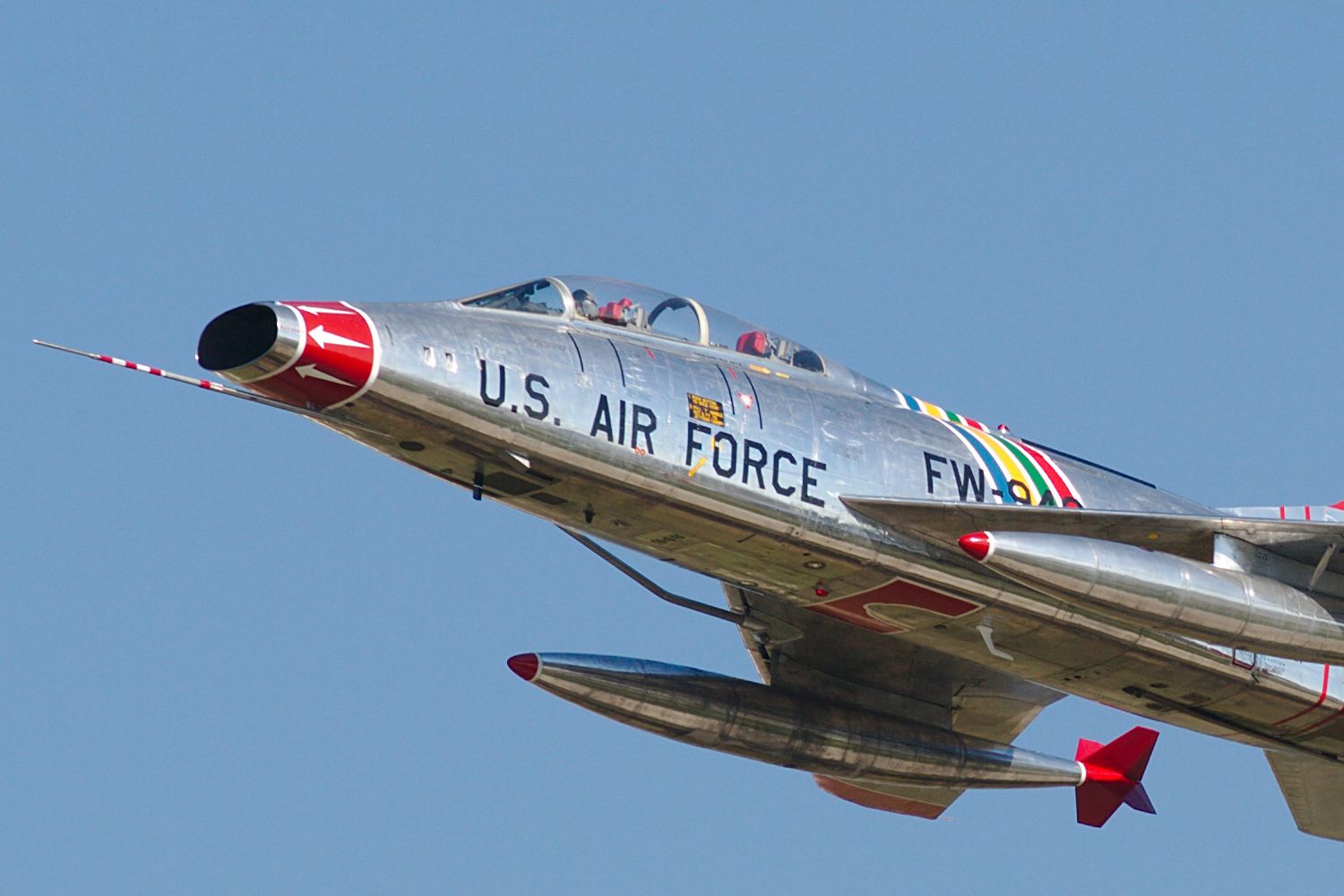
Related
Early Supersonic Jet: The Story Of The North American F-100 Super Sabre
The aircraft had an impressive operational history.
3
Mikoyan-Gurevich MiG-17
Number of units produced: 10,603
- Crew: 1
- Powerplant: 1 × Klimov VK-1F afterburning centrifugal-flow turbojet engine, 26.5 kN (6,000 lbf) thrust dry, 33.8 kN (7,600 lbf) with afterburner
- Maximum speed: 1,100 km/h (680 mph, 590 kn) M0.89 at sea level
- Range: 2,020 km (1,260 mi, 1,090 nmi) at 12,000 m (39,000 ft) with 2 × 400 L (110 US gal; 88 imp gal) drop-tanks
- Guns: 2x 23 mm (0.906 in) Nudelman-Rikhter NR-23 autocannon (80 rounds per gun, 160 rounds total)
- 1 × 37 mm Nudelman N-37 autocannon (40 rounds total)
- Rockets: 2 × UB-16-57 rocket pods for S-5 rockets
- Bombs: 2 × 250 kg (550 lb) bombs
The Mikoyan-Gurevich MiG-17 is a fighter jet designed and developed in the Soviet Union in the 1950s. Developed from the iconic MiG-15 (coming to that later), the MiG-15 performed its first flight in January 1950 and entered service in October 1952. The high-subsonic jet became a workhorse during the Korean War thanks to its optimized swept-wing and air combat capabilities.
The MiG-17 was also license-built in China as the Shenyang J-5 and in Poland as the PZL-Mieles, Lim-6. Irrespective of the version, it became one of the most successful transonic fighters before the advent of true supersonic jets. Serving over 30 global air forces, the MiG-15 remains in limited service today. A total of 10,649 units were produced, including Chinese and Polish variants.
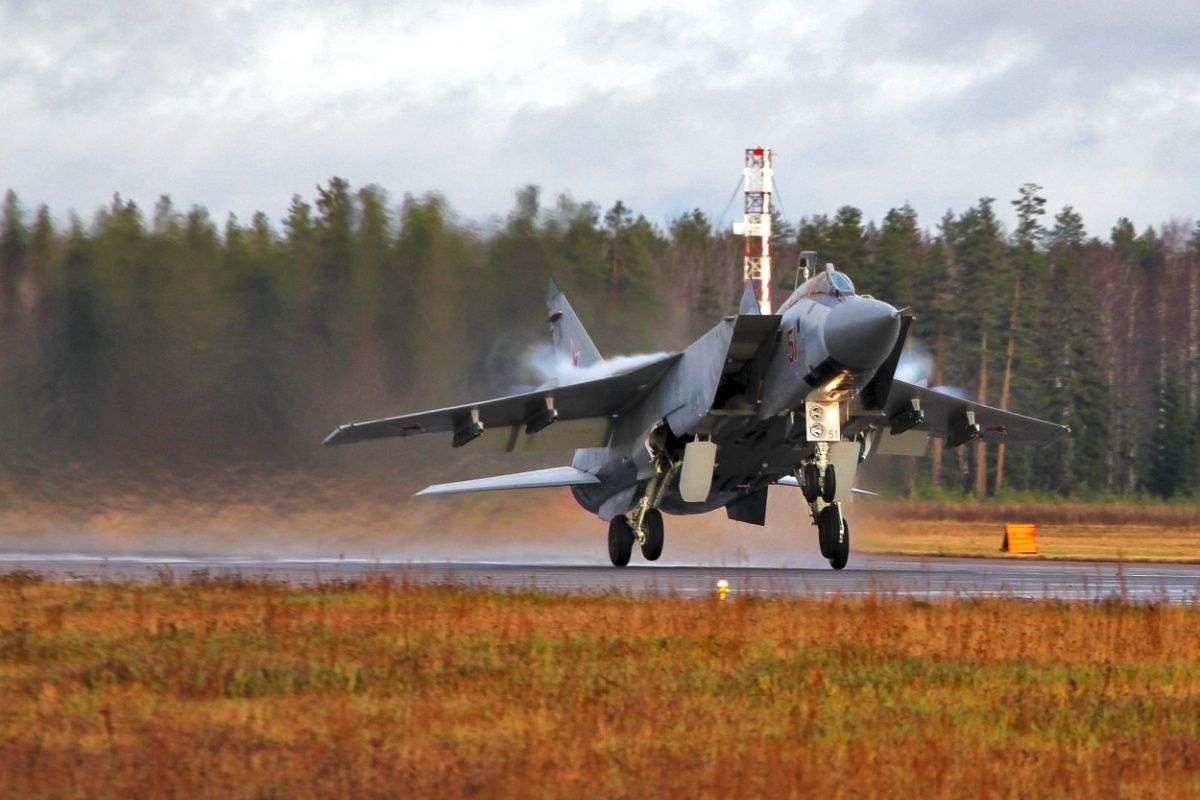
Related
Ukrainian Missile Strike In Crimea Takes Out 2 Russian MiG-31 Fighter Jets & Damages 3 Su-27s
Ukraine managed to destroy and damage several Russian fighter jets in occupied Crimea in a devastating missile strike.
2
Mikoyan-Gurevich MiG-21
Number of units produced: 11,496
- Crew: 1
- Powerplant: 1 × Tumansky R-25-300 afterburning turbojet, 40.18 kN (9,030 lbf) thrust dry, 69.58 kN (15,640 lbf) with afterburner
- Maximum speed: 2,175 km/h (1,351 mph, 1,174 kn) / M2.05 at 13,000 m (43,000 ft) 1,300 km/h (810 mph; 700 kn) / M1.06 at sea level
- Range: 660 km (410 mi, 360 nmi) clean at 11,000 m (36,000 ft)
- Guns: 1x internal 23 mm Gryazev-Shipunov GSh-23L autocannon with 200 rounds
- Rockets: 4x S-24 or 4× UB-16-57 rocket pods (4×16 57mm rockets)
- Missiles: K-13/R-55/R-60 Air-to-air missiles
- Bombs: 2x 500 kg (1,100 lb) and 2 × 250 kg bombs
The Mikoyan-Gurevich MiG-21 is a supersonic fighter jet designed and developed by the Mikoyan-Gurevich Bureau of the Soviet Union. Following the popularity of the MiG-17, the MiG-21 performed Its first flight in June 1955 and entered service in April 1959. The relatively lightweight jet became the first successful Soviet aircraft to serve as a fighter and an interceptor, at speeds approaching Mach 2.
In terms of its combat capabilities, the MiG-21 competed with the Lockheed F-104 Starfighter, Northrop Grumman F-5 Freedom Fighter, the Dassault Mirage III. The Delta-winged fighter was operated by over 60 countries in four continents. The type remains in service nearly seven decades after its first flight. A total of 11,496 units were produced (10,645 in the USSR, 840 in India, and 194 in Czechoslovakia).
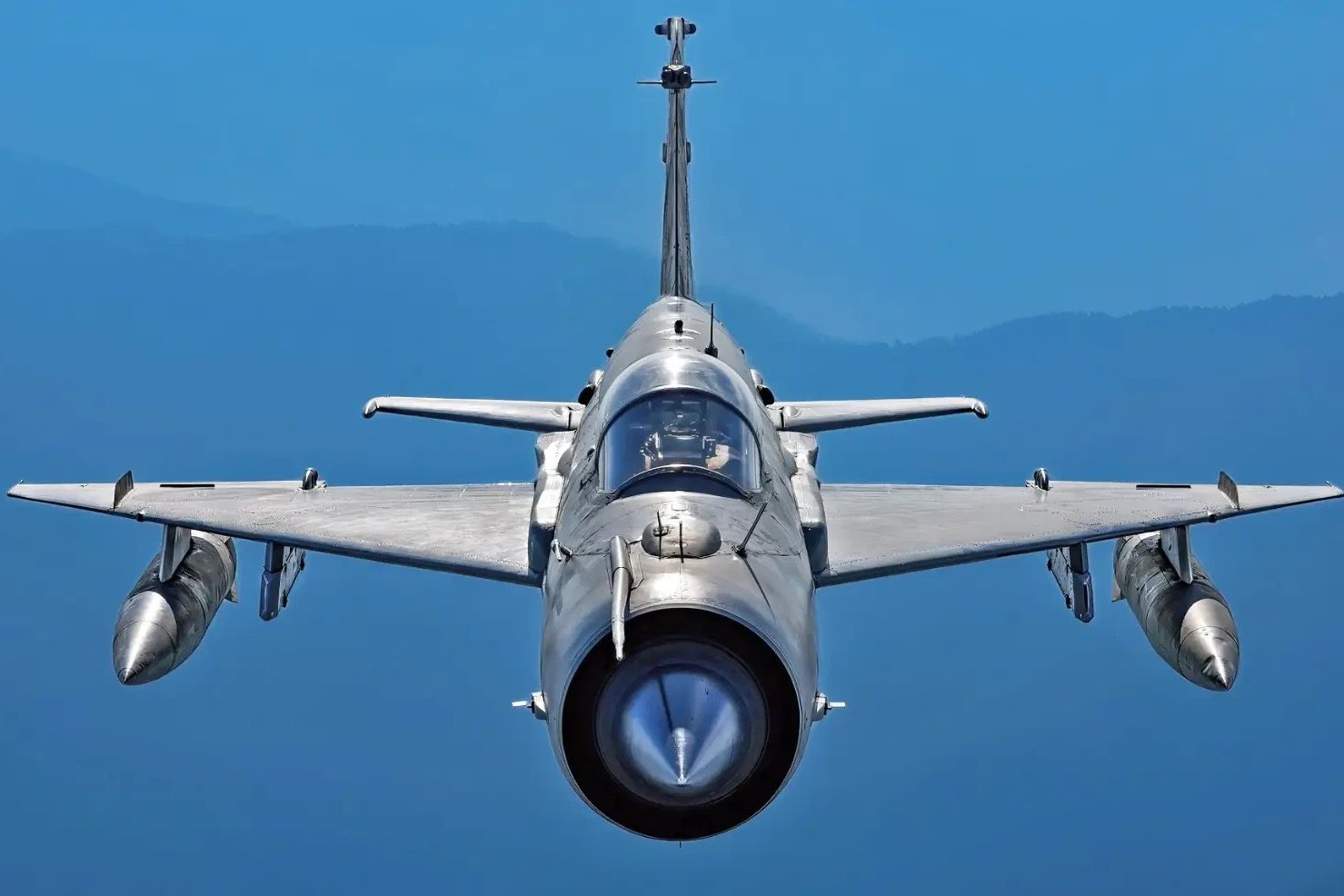
Related
India Set To Retire Its Mig-21 Fleet In 2025 After 60 Years & 400 Crashes
After half of the fleet crashing over the years, the last of India’s 40 MiG-21s are expected to retire in 2025.
1
Mikoyan-Gurevich MiG-15
Number of units produced: 18,000
- Crew: 1
- Powerplant: 1 × Klimov VK-1 centrifugal-flow turbojet, 26.5 kN (5,950 lbf) thrust
- Maximum speed: 1,076 km/h (669 mph, 581 kn) at sea level
- Maximum speed: Mach 0.87 at sea level
- Ferry range: 2,520 km (1,570 mi, 1,360 nmi) at 12,000 m (39,000 ft) with 2×600 L (160 US gal; 130 imp gal) drop-tanks
- Guns: 2x 23 mm Nudelman-Rikhter NR-23 autocannon in the lower left fuselage (80 rounds per gun, 160 rounds total), 1x 37 mm Nudelman N-37 autocannon in the lower right fuselage (40 rounds total)
- Bombs: 100 kg (220 lb) bombs
- Other: drop tanks or unguided rockets
Topping our list of best-selling fighter jets is the Mikoyan-Gurevich. MiG-15, a fighter jet produced by the Mikoyan-Gurevich Bureau of the Soviet Union. The MiG-15 performed its first flight in December 1947 and entered service in February 1949. The MiG-15 became the first successful swept-wing jet fighter to outweigh the straight-winged jet day fighters during the Korean War. The jet became the reason for the US Air Force to rush the North American F-86 Sabre as a competitor fighter.
As mentioned earlier, the MiG-15 became the foundation for the more advanced MiG-17 that became significantly effective against Republic F-105 Thunderchiefs and McDonnell Douglas F-4 Phantom II supersonic fighters during the Vietnam War. It remains one of the most produced fighter aircraft, with nearly 16,000 examples built (Over 13,000 in the USSR and over 4,200 under license). The aircraft remains in limited service as an advanced trainer with the Korean People’s Army Air Force.
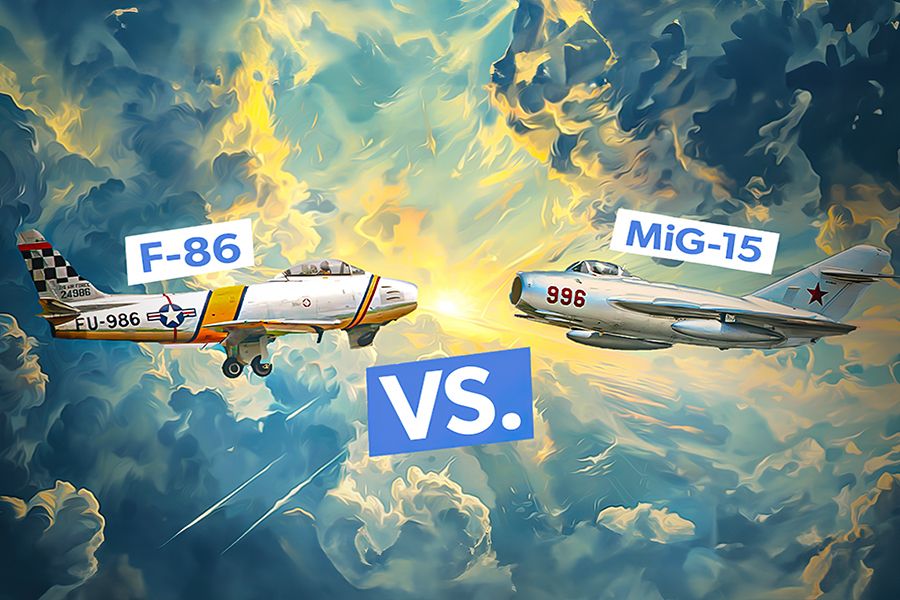
Related
Earliest Jet Dogfights: MiG-15 vs F-86 During The Korean War
These jets went toe-to-toe over Korean skies.
What are your thoughts on the best-selling fighter jets of all time? Share your views in the comments section.


